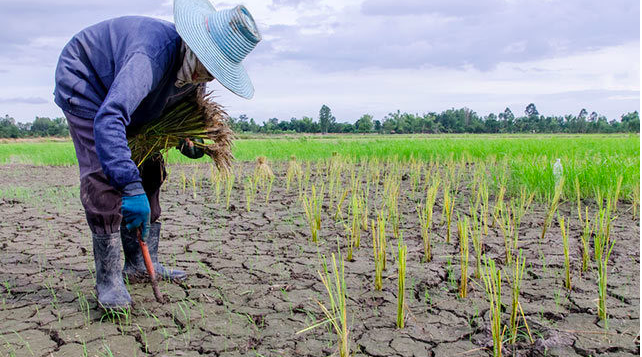
The weak El Niño is starting to affect the farmlands in Central Visayas including some areas in Cebu.| Cebu.gov.ph
CEBU CITY, Philippines — The Department of Agriculture in Central Visayas (DA-7) has already recorded more than 80 hectares of farmlands in the region to have experienced drought due to the effect of the weak El Niño that the country is experiencing now.
DA-7 Regional Technical Director Joel Elumba said in an interview on Sunday, March 24, that affected crops included palay, corn and banana plantations in Balamban town in the province of Cebu; Dumaguete City and Mabinay town in Negros Oriental; and several towns in Siquijor.
Read more: El Niño has affected crops in 7 towns, 2 cities of Cebu; fish kill cases on the rise
“We are urging other LGUs (local government units) nga mo-submit pod ug report so that we can also monitor and evaluate the extent of the damage on their farms,” Elumba said.
(We are urging other LGUs to also submit their reports so that we can also monitor and evaluate the extent of the damage on their farms.)
Elumba |Futch Anthony Inso
In Negros Oriental alone, Elumba said that 78 hectares of farmlands had already been damaged due to the intense heat.
Aside from sending their El Niño task force in areas affected with the phenomenon, Elumba said that they were also using new technologies in order to assess farmlands affected with the dry spell.
“We are now using drones to assess and monitor farms since last week,” he added.
He said that the agency had invested P2 million in the technology.
He also said that these drones could also be used to map farmlands in the region and monitor irrigation dams.
Read more: With El Niño here, PDRRMO urges Gov. Davide to place province under state of calamity
Earlier, the Cebu Provincial Agriculturist Office had told reporters that the dry spell had already affected around 30 hectares of farmlands in seven towns and two cities in the province.
Elumba said that they were preparing their seed reserves, so that they could distribute them when planting season would start.
He also advised farmers to plant drought resilient crops, and to harvest their crops earlier in order to avoid further damage./dbs